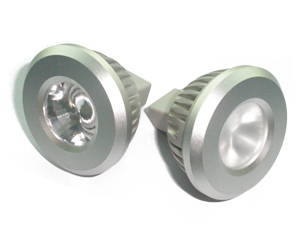In the past few years, portable devices, display and keyboard illumination feature on the demand for white LED lights driver rapid growth, this growth stems from the emergence of the color display, especially mobile phones and other handheld devices in active matrix lcd promote. Almost all power management vendors provide white light led drive, but the market is basically divided into two camps. Some people like to charge pump solutions, while others like the boost converter solutions. The reason is simple boost converter, such as higher efficiency. This article will compare the charge pump solutions with a boost converter solution specific factors, and discuss the possible existence of electromagnetic interference (emi).
Led the drive to select the boost converter or charge pump solutions for white, it is important that all the specific factors to consider two solutions. We should recognize that the final application of white LED drive requirements may vary widely, it is very important. For example, for lcd module manufacturers, component height may be the most important design parameters for the manufacturer of personal digital assistant (pda), the most important design parameters may be efficiency issues. Figure 1 shows a typical application of the White led the charge pump drive, the device used here for tps60230.
tps60230 usually powered directly by the lithium-ion battery, the typical voltage range of 3.0 ~ 4.2v, at the same time for up to 5 led power supply, each current of 20ma. Figure 2 shows the typical white led driver tps61062, this is a boost converter solution.
This is the smallest solution, the least number of external components needed. Based on Figure 1 and Figure 2 shows the solution, we will discuss the most important design parameters of the boost converter and charge pump solutions, as well as the differences between the two. However, the two designs have in common, we can also charge pump boost converter white led drive to compare.

Comparison of efficiency – the charge pump and a boost converter
We hardly generally charge pump solution is an efficient solution, which is led forward voltage, because the overall efficiency depends on the lithium-ion battery discharge characteristics, and led current application parameters, they largely determine the charge pump mode of operation. Figure 3 shows a typical efficiency curve of the charge pump solutions. When the converter operates in the case of “the ldo mode” when a gain of 1, input voltage range from 4.2v down to 3.6v ranging from the level of efficiency higher than 75%, as shown in Figure 3. Ldo mode, charge pump, like ldo, input voltage regulator down to led forward voltage, typically 3.1 ~~ 3.5v. the ldo another mode of an active role, the device does not switch the exchange occurs, thus avoiding the emi problem.
However, the gain in the drive the ldo mode “switch to boost mode (boost mode) depending on the situation led forward voltage and drive ic internal voltage drop of 1.5, the efficiency dropped significantly. In boost mode, the device the switch occurs, the internally generated voltage rail is 1.5 times higher than the input voltage, which need to be adjusted down to the LED forward voltage levels, which reduces efficiency. Therefore, the drive to work in the time the ldo mode under the longer, the higher the efficiency charge pump.
With charge pump solutions, the boost converter tps61062 (Figure 4) are up 75% to 80% efficiency in the entire input voltage range of lithium-ion battery. Some of the boost converter solutions for its efficiency even in the case of using an external calibration diodes up to 85%, such as tps61042. If less than 5 led power supply, then the efficiency is even increased, because of the relatively low input to output voltage conversion. Overall, the efficiency of the boost converter is slightly higher than the charge pump solutions, especially when four or even more led power supply.
